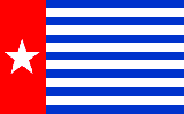Imagine swimming or fishing in a river where 230,000 tons of mine waste is dumped each day.
It is a harsh reality for people living among the Aghawagon, Otomona and Ajkwa rivers in the Mimika district of Papua near the huge Grasberg mine, owned by mining giant Freeport-McMoRan and partner Rio Tinto.
In 2006 the Indonesian Forum for the Environment (Walhi) released a technical analysis claiming Freeport did not have the required permits for waste disposal.
It said that waste from the mine was breaching Indonesian and international water quality standards, especially for total suspended solids and dissolved copper in the Ajkwa River system and the estuarine area downstream.
It also raised concerns about acidic mine drainage, which is the outflow of acidic water from areas where the earth has been disturbed, caused by waste rock dumped in the highlands around the mine.
At the time, environment groups expected the government to take action by suing Freeport, or at least forcing it to stop dumping waste. They were disappointed, however, when then-environment minister Rachmat Witoelar announced the company would receive a two-year stay of execution.
For Siti Maimunah of the Mining Advocacy Network (Jatam), it was a bitter pill.
“The ministry was supposed to take legal action against the company once they found that they were violating the law and destroying the environment,” Siti said. “Instead they issued a decision which only served to legitimize practices that are banned in countries like the United States.”
In 2008, the Environment Ministry further accommodated Freeport, issuing a special set of regulations designed allow the waste disposal to continue as such. A 2008 ministerial decree called for regular water quality checks, but the monitoring points were at substantial distances from the areas where pollution levels were highest.
Both of the freshwater monitoring points are 30 kilometers from the town of Timika and 80 kilometers from the source of the tailings, a type of mine waste slurry, at Grasberg. The seawater monitoring points are 13 kilometers offshore, rather than in the more immediate Ajkwa estuary.
The minister’s letter also gave permission for the tailings to smother an area of around 230 square kilometers of lowlands riverine rainforest.
According to Deputy Environment Minister Masnellyarti Hilman, who is responsible for toxic waste management, the ministry plans to re-examine the terms of the 2008 decree.
“Regarding the SK [ministerial decision], the ministry is allowed to review it to improve the tailings management,” Masnellyarti said.
Although a 2001 regulation sets a limit of 50 milligrams per liter for TSS in aquatic environments, the 2008 decree allows Freeport a special monthly average of 9,000 milligrams per liter, she said.
“The [river used for tailings disposal] now carries around 4,000 milligrams per liter on average,” she said. “We want to review whether [the 2008] standard is appropriate and legal.”
Siti said the 2008 decree was misguided from the start.
“There was supposed to be real legal enforcement, not just issuing requirements for dumping,” Siti said. “From the very start they have violated regulations. They should not dump tailings into the river. We’re talking about 40 years of waste here. Those special permissions are very questionable.”
